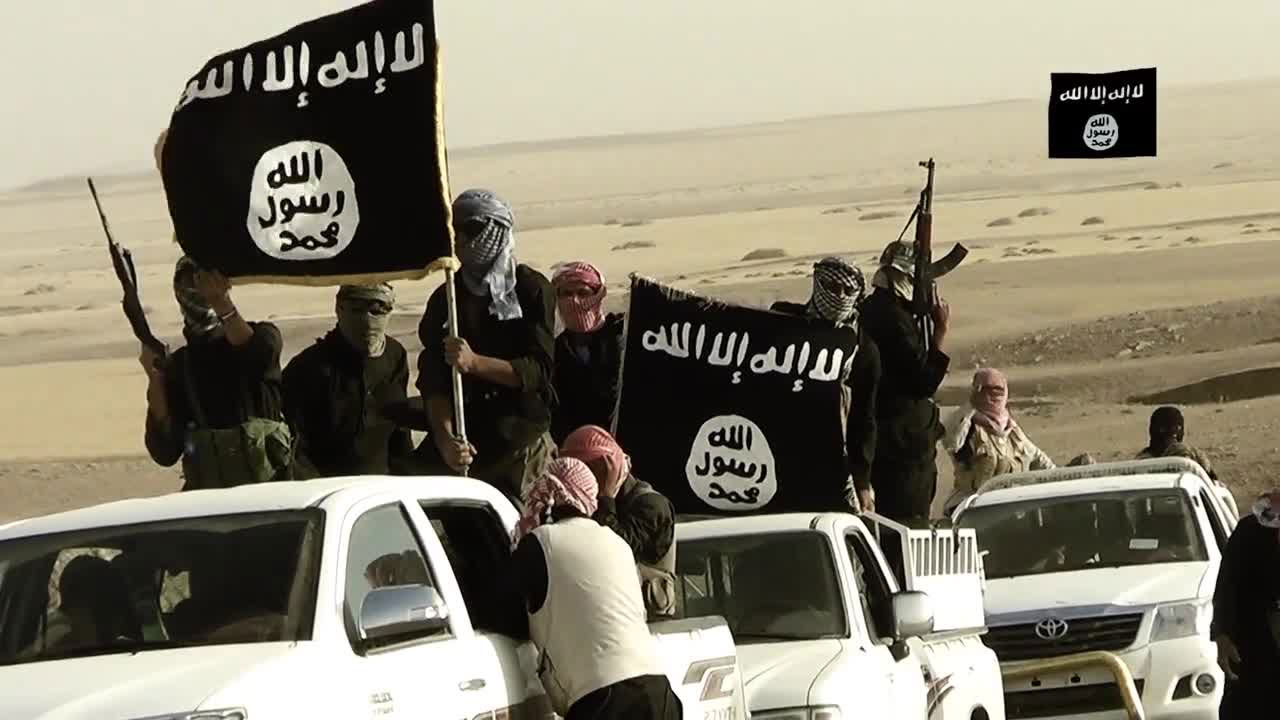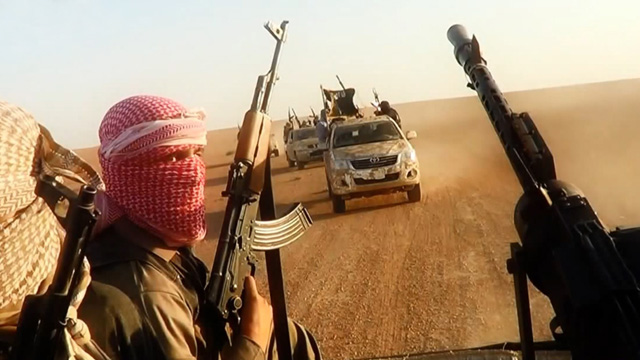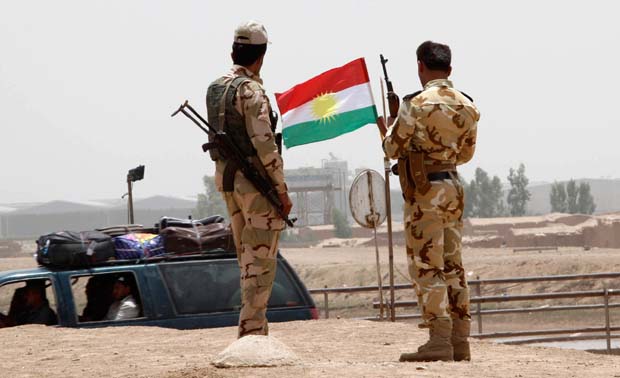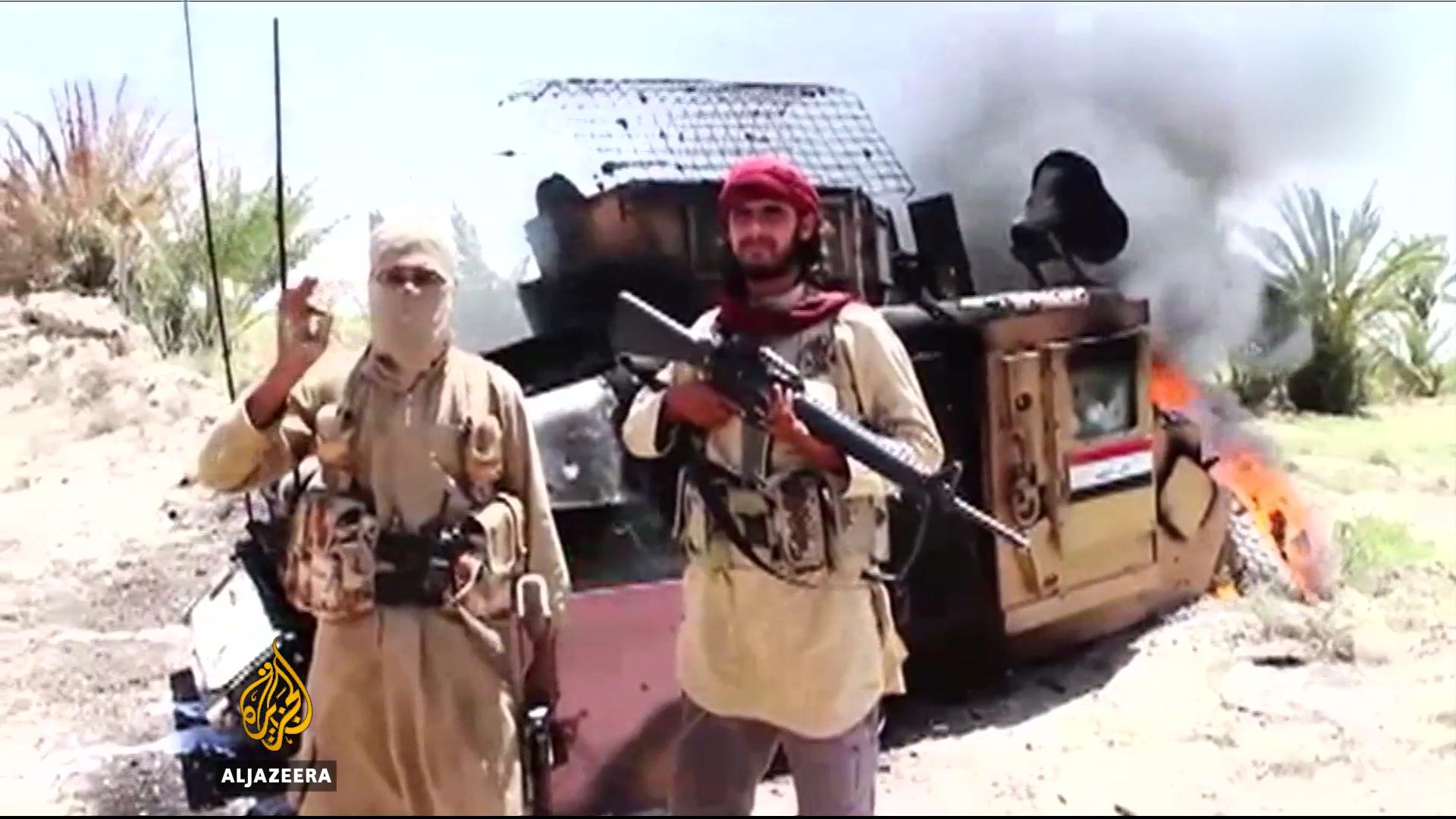
It has been nearly three years since the Islamic State in Iraq and Syria (ISIS) captured Mosul and advanced rapidly through a number of major population centers in northern Iraq, triggering a major U.S.-led internationalization of the conflict between the jihadist group and the myriad opponents to its attempt to establish territorial supremacy in Iraq and Syria.
On the whole, while ISIS’s geographic extent and financial means have shrunk, seizing and securing population centers under its control remains a daunting military task fraught with humanitarian risks and political complications. While the Coalition-supported effort to isolate Mosul has advanced only haltingly, Iraqi forces are moving on Fallujah, launching another urban assault in a perennial hotbed of Sunni Arab insurgency. In northern Syria, the Kurdish People’s Protection Units (YPG) and militias affiliated with them under the aegis of the Syrian Democratic Forces (SDF) are targeting ISIS in the approaches to Raqqa city and the Manbij pocket, ISIS’s primary extant corridor to the Turkish border.
One of ISIS’s greatest military advantages remains its unity of effort compared with the shifting coalitions and squabbling belligerents opposing it. In Fallujah, political divides between Iraqi leaders and the country’s foreign patrons manifest themselves on the battlefield as militias, tribal fighters, Iraqi Army and police forces, and Iraq’s elite Counter-Terrorism Service balance the military necessities of the anti-ISIS fight with their political objectives. In northern Syria, anti-ISIS efforts must reckon with the hostility of many Syrian Arab groups (and key rebel sponsor, Turkey) to consolidated YPG gains, along with the Assad regime’s own multi-front war with rebel groups and ISIS. Despite increasingly apparent strains on manpower and frustrated attempts at internal development, ISIS continues to enjoy the benefit of opponents whose level of coordination ranges from suboptimal to nonexistent.
Fallujah and the Politics of Mobilization
After successfully capturing Ramadi in the winter, anti-ISIS forces in Iraq once again faced the question of where to concentrate efforts for the next major offensive. While the long-promised offensive to retake Mosul saw some effort, it remains a distant goal. As Iraq’s second-largest city, it will require huge numbers of attacking forces to secure its approaches and clear the city itself. Peshmerga reporting to leaders in the Kurdish Regional Government are the dominant force on the frontlines around Mosul now, while forces under Baghdad’s command have yet to secure the extended lines of communication north.
As ISIS bombing campaigns continue to terrorize Baghdad residents, however, the prospects for a far-flung offensive that would do little to displace ISIS from the Baghdad belts and secure the capital are dim. ISIS has exploited Iraq’s shortages of effective manpower for years through diversionary offensives aimed at targets such as the Bayji oil refinery, which took Iraqi forces over a year to relieve. Diversionary attacks launched from Fallujah and the Baghdad belts is particularly sensitive because of the debilitating political effects insecurity in the capital engenders. While seizing Baghdad itself was far outside ISIS’s means even at the zenith of its offensive capability, ISIS, as in its earlier incarnations, still values the ability to exacerbate sectarian strife and tie down security forces in the capital. By Michael Knights’ estimate, nearly half of Iraqi combat troops are already garrisoned in Baghdad.
As Knights notes, that major portion of Iraqi military resources has brought neither security against ISIS’s brutal bombing campaigns nor the confidence of many Iraqi citizens. That political distrust can create security problems of its own, as the Moqtada al-Sadr-sponsored protest that broke into the Green Zone last month demonstrated. Militia groups are well-situated to exploit the combination of strained military capacity and political tension. The collapse of several Iraqi military and police units in the summer of 2014 provided militias and their leaders, many of them sectarian outfits with ties to Iran, an opportunity to legitimize themselves and render themselves indispensable in an hour of dire need. While the Iraqi military has made significant progress since its summer 2014 nadir, PMF militias retain strong incentives to assert their presence on the battlefield as they compete for influence. As in the spring 2015 Tikrit offensive, the presence of militia units, especially those with Iranian affiliations, poses an operational risk that precludes the presence of U.S. advisers and complicates its ability to execute and legitimize air support to forces on the ground. Nevertheless, forsaking Iraq’s more formal security forces for their militia ties is unlikely to marginalize militias that benefit from continued insecurity in the capital and shortfalls of manpower on the front lines.
The United States has repeatedly tried to find a compromise option during offensives with a large militia presence. In the case of Fallujah, reporting by Niqash suggests initial plans were to relegate militias to a secondary role, leaving U.S.-supported Iraqi forces in the lead. That quickly broke down as militias began shelling the Fallujah suburbs with their considerable (but indiscriminate) artillery and advancing on the northern front. Nor did Qasem Soleimani, the infamous Iranian Revolutionary Guards Corps officer, shy away from photo ops with militia personnel during the onset of the battle. While the Coalition has tried to limit its support to the southern front, where Iraqi Special Operations Forces and other formal units remain in the lead, progress on completing the Fallujah encirclement in the north may lead to a major offensive effort from that direction.
As the United States knows from its own battles in Fallujah, an urban assault against a still-populated city is a fraught enterprise even for a world-class military. Even without the participation of vengeful sectarian militias, urban warfare doctrine for militaries such as Iraq’s still more or less relies on a combination of grinding, manpower-intensive clearing efforts and firepower that rubbles cities. The primary precaution against civilian harm is depopulating the city itself, which ISIS is actively attempting to undermine. Sectarianism, in this case, is less the cause of the professional military’s heavy-handed urban counterinsurgency tactics than an important factor shaping how the population perceives it. The same cannot be said of many of the PMF units involved, but reducing support to the offensive risks empowering these units by rendering their manpower and firepower more critical to the campaign.
With two years of defensive preparations, ISIS units are already bogging down attackers with snipers, IED emplacements, bunkers, and re-infiltrating fighters into the midst of Iraqi positions through their extensive tunnel network. Concerned about the number of un-evacuated civilians and with daunting challenges securing the Nuaimiya area to the south of Fallujah city proper, Iraqi forces announced they would pause offensive operations in that area. Completing the encirclement of Fallujah and clearing well-defended positions from its outskirts will be an arduous task, and while the U.S. and other countries have been mustering resources to support operations in Mosul, it is unlikely an offensive could be properly launched and sustained there if Baghdad is in turmoil. Without greater security in the Baghdad belts and Anbar, the planned Mosul offensive will continue to suffer from resource diversions and political tumult that can only hinder the deal that will need to be made between Kurdish and local Sunni Arab leaders to launch what will be the largest urban assault in the ISIS conflict yet.
Picking Winners in the Manbij Pocket

While the fall of Mosul has always loomed large over Coalition planning, ISIS’s positions in northern Syria, including Raqqa city, the de facto administrative center of its self-proclaimed caliphate, continue to vex anti-ISIS forces in Syria. Raqqa has long been an attractive target for the anti-ISIS Coalition, given its importance and its relative proximity to the YPG, which proved to be one of ISIS’s most resilient opponents at Kobane and other battlefields. Unfortunately, the very military success that has enamored Coalition partners, including the head of Central Command, is inseparable from the battlefield skills the YPG inherited as an affiliate of the Kurdistan Workers’ Party (PKK) and its clashes with Syrian rebel groups across the ideological spectrum. While Turkey is engaged in a tough counterinsurgency fight with the PKK (a designated Foreign Terrorist Organization) and the U.S. has labored to secure permission to conduct combat operations in Syria from Incirlik in Turkey, the Coalition has struggled to develop alternative anti-ISIS forces in northern Syria. The creation of the YPG-led SDF, incorporating non-Kurdish militias, may have achieved a veneer of political palatability to local Arab populations and the Turkish government. Now, as the SDF crosses into the west banks of the Euphrates to march on Manbij, the SDF will undergo its most important political and military test yet, one that will play an important role in determining the future of anti-ISIS operations in northern Syria.
The intensity of conflict between the nominal co-belligerents in the fight against ISIS in Syria dwarfs even the fractious politics of Iraq. ISIS is happy to play a spoiler role in the main event in Syria, the conflict between the regime and rebels. The YPG, for their own part, were able to take advantage of the regime’s distraction to consolidate their position in the Syrian north, a development at odds with their vision of Syria’s future and key rebel sponsor Turkey’s conception of security. Syria’s “cessation of hostilities,” although incomplete, has allowed both the regime and rebels to focus on other opponents. The Russian-backed Palmyra offensive recovered territory the Syrian regime could not afford to repulse ISIS from during the major rebel offensives last summer, while the reduction in hostilities between rebels and the regime was quickly followed by an intensification in fighting between YPG units in the northwestern enclave of Efrin as they pushed east into a narrow corridor of rebel-held territory between Aleppo city and Azaz. Rebel units involved included the vetted recipients of TOW antitank guided missiles and other equipment, although contrary to many reports, the YPG units in question have never received support from the Coalition anti-ISIS campaign (though they did receive air support from Russia).
Those events highlighted a critical question: who could the United States rely on to close the Manbij pocket in northern Aleppo, cutting off ISIS’s ground lines of communications to the Turkish border? West of the Manbij pocket, U.S.-affiliated rebel groups frequently fall prey to Jabhat al-Nusra, which attacks and loots rebel groups that it recognizes as foreign attempts to counterbalance its influence. But supporting the YPG’s attempts to link up with the Afrin enclave through advances in Manbij would inevitably lead to opposition from Turkey and rebel groups. Such an advance would be more likely to set the stage for an intensified round of YPG-rebel fighting, rather than a triumphant march on ISIS’s capital. ISIS, for its own part, has sought to capitalize on the precarious situation of rebel forces in the Azaz and Marea area through intensified attacks.
The burden of solving this strategic conundrum will fall on the Arab and Turkmen fighters operating under the SDF. In theory, the United States will allay Turkish and rebel concerns by encouraging the YPG to withdraw from SDF-seized territory west of the Euphrates. The larger, more cohesive YPG will bear the brunt of the heavy fighting against ISIS, leaving the Arab and Turkmen SDF militias as a “hold” force. As Aaron Stein observes, ISIS’s practice of rapid counterattacks and feints when under offensive pressure are already posing a significant challenge. The regime’s experience in Palmyra and surrounding areas of Homs provides an illustration of these difficulties. After trumpeting the retaking of the city, ISIS managed to destroy Russian helicopters at the well-guarded T4 airbase, cut a key line of communication to Palmyra, and retake the Shaer gas field (possibly before sabotaging it in a calamitous scorched earth tactic). Particularly given ISIS’s predilections for diversionary attacks, taking on the less militarily capable elements of the SDF west of the Euphrates could bog down its forces and force continued or escalated YPG involvement, stoking tensions between the SDF and other nominally anti-ISIS forces.
The success of an SDF offensive in Manbij, both in terms of the initial military effort and the performance of the “hold” force to follow, would be a welcome development for the longer-term plan to launch an offensive in Raqqa. While a Raqqa offensive would enjoy more direct participation by U.S. Special Operations Forces on the ground, the availability and efficacy of non-Kurdish SDF units is critical for attempts to retake, hold, and administer Raqqa city and other majority-Arab population centers. As in many civil wars, militarily successful coalitions engender bandwagon behavior. But expanding non-Kurdish participation in SDF also relies on the careful management of tensions with rebel groups in the Manbij pocket. If more powerful jihadist rebel groups, such as Jabhat al-Nusra (or Ahrar al-Sham), repeat their humiliations of other anti-ISIS forces that received U.S. training and equipment, it could discourage collaboration with the SDF even if the resulting escalatory tension remained manageable. As in the case of the ill-fated Division 30, the U.S. may end up conducting airstrikes against more than ISIS in its effort to protect the SDF “hold” force.
From “Remaining and Expanding” to Surviving and Adapting

While much of international concern about ISIS has shifted from its territorial aspirations in Iraq and Syria to its potential for coordinating and enabling attacks in Europe or elsewhere abroad, ISIS’s geographic contraction and reduction in administrative capacity should not overshadow its continued military capabilities and strategic flexibility. Even with significantly reduced foreign fighter flows and financial revenues, some of the underpinnings of ISIS’s model endure. In both Iraq and Syria, ISIS’s enemies remain to varying degrees divided and distracted. The necessity of cross-frontline trade and rampant corruption preserves options for ISIS to eke out a baseline extractive economy, even if it is only enough to sustain a return to insurgency rather than an ambitious state-building project. Finally, as a result of these two trends, ISIS will continue to exploit the opportunities that arise when exhausted or corruption-undermined forces, operating on fronts often of secondary political importance, earning them more opportunities to buy time and plunder equipment.
ISIS has many options to manage its contraction. So long as costly, neighborhood-by-neighborhood fights like Fallujah continue to define the Iraq campaign, the group will have options to buy time to redeploy its forces to more promising theaters or turn population centers into costly death-traps for attackers, bogging down their forces. It is difficult to what extent the loss of cities in and of themselves damages ISIS. Much of the value-added from capturing cities comes from plunder and extortion. While analysts have correctly pointed out this can have diminishing returns as residents try to flee and internal improvements become encumbered, it also means losing cities is not necessarily a death blow for the ISIS economy. Control of trade routes, or at least sufficient access to extort them, already allows ISIS to extract economic benefits from activities in population centers it does not control. More important than the loss of cities is the loss of combatants and ISIS’s military capacity to conduct raids and offensives. Capture of military equipment, supplies, and valuable goods was the foundation of the early ISIS state-building enterprise, and will remain a viable option so long as the frontiers with ISIS operating areas remain vulnerable.
Beyond the battles playing out in Fallujah and Manbij mentioned above, there are, of course, other developments that could significantly shape the anti-ISIS fight. The “cessation of hostilities” agreement, however unevenly heeded, will retain great influence on the ability of regime and rebel forces to divert attention to dealing with ISIS. Along with that, the post-“withdrawal” posture of Russia (and the regime’s other foreign backers) will also determine what role the regime plays in the next stage of the anti-ISIS fight. While pro-regime sources continue to describe a “race for Raqqa,” it is difficult to imagine the regime sustaining a pivot from ISIS operations in northern Homs and Hama to a drive for Raqqa city or Taqba before the approaches to Palmyra are secure or the siege of Deir Ezzor ends.
Given the increasing paramilitary delegation and logistical cannibalization of the regular army, ISIS may divert more of its attention towards the regime if its fortunes in the field shift further in Iraq and northern Syria. Jabhat al-Nusra’s future prospects will also play an important role in shaping the fate of its chief jihadist competitor. As Yasir Abbas argues, Nusra’s more cautious and collaborative approach amidst the Syrian rebel groups may be paying off. While it may be more preoccupied with consolidating its position in the northwest for now, its hostility to the YPG and distrust of Western-backed Syrian rebel groups may lead it to upset the delicate balance of power the Coalition seeks to maintain within the SDF as it liberates majority-Arab territory from ISIS.
The anti-ISIS Coalition has succeeded in stemming the group’s rapid advance and frustrating many of its grandiose aspirations in the region. Nevertheless, if ISIS’s history shows anything, it demonstrates an incredible resilience and capacity for adaptation. Given the importance of sustaining complex battlefield alliances between competing groups in the anti-ISIS fight, it is more important than ever not to delay questions of the post-war order in liberated territory until after the dust has settled. An ISIS substantially weakened from its 2014 heights is still a formidable opponent. But its greatest strength maybe that it is not the most worrying challenge for so many of its enemies.






